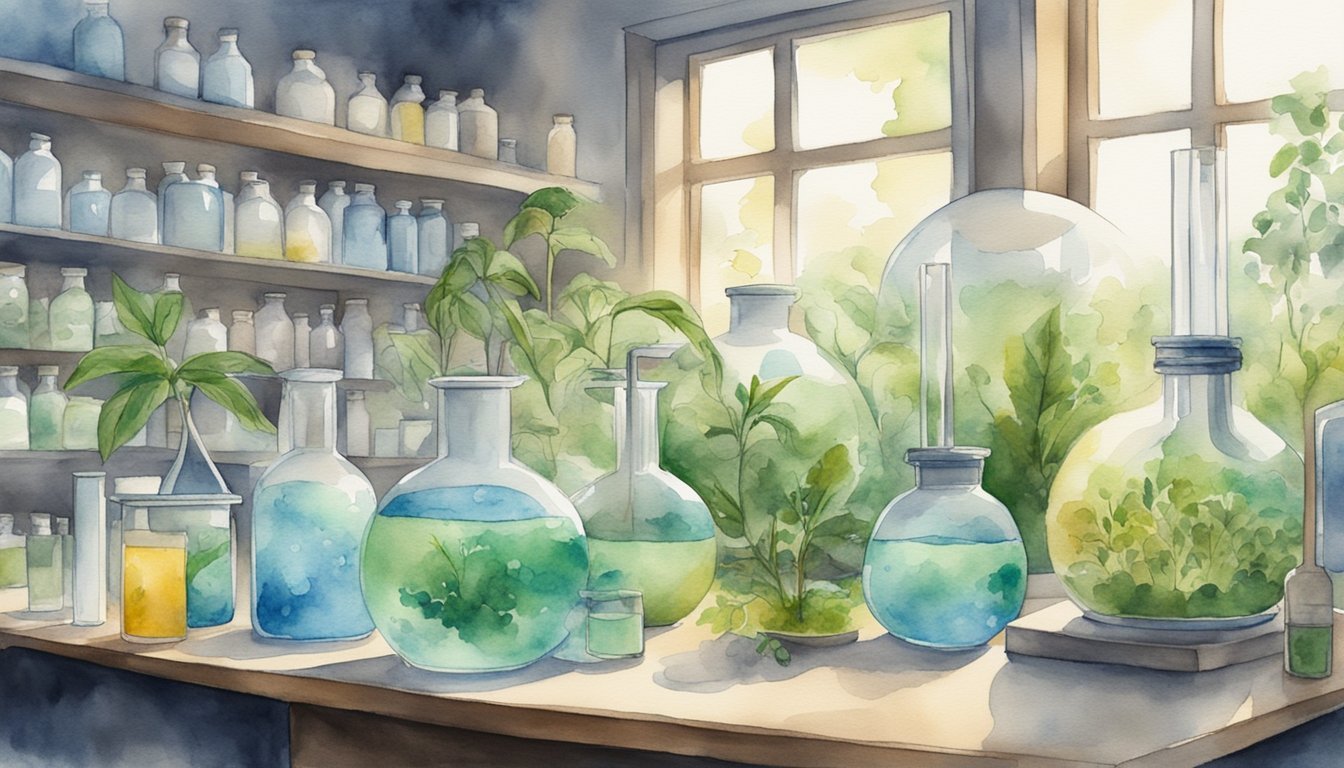Fundamentals of Chemistry
Chemistry is a captivating subject that is central to understanding the world. Students from middle school to high school can discover the wonders of chemistry through structured lesson plans and the guidance of resources like the Journal of Chemical Education. This section explores chemistry’s core concepts and their significance in nature and everyday life.
Atoms and Molecules
Atoms are the basic units of matter, with each element having its unique type of atom, like those of hydrogen or gold. Molecules form when two or more atoms bond together, creating compounds such as water and carbon dioxide, which are essential to life on Earth.
The Role of Ions
Ions are atoms or molecules that have gained or lost electrons, acquiring a charge. Salt, or sodium chloride, disassociates into ions in solution, which is a fundamental concept in chemistry lessons for high school students.
Introduction to Chemical Reactions
Chemical reactions involve the transformation of substances through the breaking and forming of chemical bonds. They are crucial to understanding how new substances like salt and water are formed from their constituent elements.
Understanding Acids and Bases
Acids, like citric acid in lemon juice, donate protons, while bases, such as baking soda, accept them. This interaction is central to many chemical processes, including those in nature and industrial applications.
Chemistry in Nature
Nature is a vast laboratory where chemical reactions occur continuously. Photosynthesis, for instance, converts water and carbon dioxide into glucose and oxygen, showcasing the importance of chemistry in the natural world.
Elements and Compounds
An element is a pure substance made of only one kind of atom, like gold, while a compound consists of two or more elements chemically combined, such as water (H2O). Distinguishing between elements and compounds is a key learning outcome in chemistry education.
Chemistry and the Environment
Chemistry plays a pivotal role in understanding and addressing environmental issues. This section explores the intricate connections between chemistry and our planet, highlighting how chemical science is essential in tackling climate change and promoting sustainability.

Chemistry of Climate Change
The chemistry behind climate change is closely tied to the accumulation of greenhouse gases like carbon dioxide (CO2) and methane (CH4) in the atmosphere. These gases trap heat, leading to a rise in Earth’s average temperature—a phenomenon known as global warming. Studying atmospheric chemistry helps scientists track the sources and predict the impacts of these gases.
Sustainable Chemistry
Sustainable chemistry, often referred to as green chemistry, focuses on the design of chemically-based processes and products that are environmentally friendly. It aims to reduce or eliminate hazardous substances, minimize energy consumption, and use renewable resources whenever possible, aligning with principles of sustainability.
Chemistry in New Technologies
Emerging technologies often harness novel chemical processes or materials, such as nanoparticles and graphene, which have shown great potential in improving environmental outcomes. For example, graphene’s unique properties are being explored in water purification tech and energy storage.
Environmental Impact of Chemicals
The environmental impact of chemicals can be profound, affecting water, soil, air, and living organisms. Understanding the environmental fate and transport of chemicals, such as plasticizers or agrochemicals, is essential for assessing and mitigating potential environmental and human health risks.
Green Energy and Fuel
Green energy and alternative fuels, which may include biofuels or hydrogen, are growing areas of interest in chemistry. The development of these sustainable energy sources requires a deep understanding of chemical reactions and material science in order to be both effective and eco-friendly.
Chemistry in Everyday Life
Chemicals are a part of everyday life, playing roles in products ranging from detergents to drugs. Green chemistry seeks to ensure these products are safe for consumers and the earth. For example, during the COVID-19 pandemic, the safe design of drugs and sanitizers was paramount.
Educational Strategies for Chemistry
Modern chemistry education includes teaching strategies that underscore the importance of environmental preservation. Lesson plans from entities like the American Chemical Society (ACS) now integrate climate change, sustainability, and green chemistry principles to equip students with the knowledge to make safer, more informed choices for the future.
- Chemistry education must change to help the planet: here’s how – Nature
- Chemistry and the Environment – Chemistry LibreTexts
- How chemistry is helping to improve the environment around us
- Greening the chemistry curriculum as a contribution to…
- New Green Chemistry Science Projects—Sustainable Science for Students

